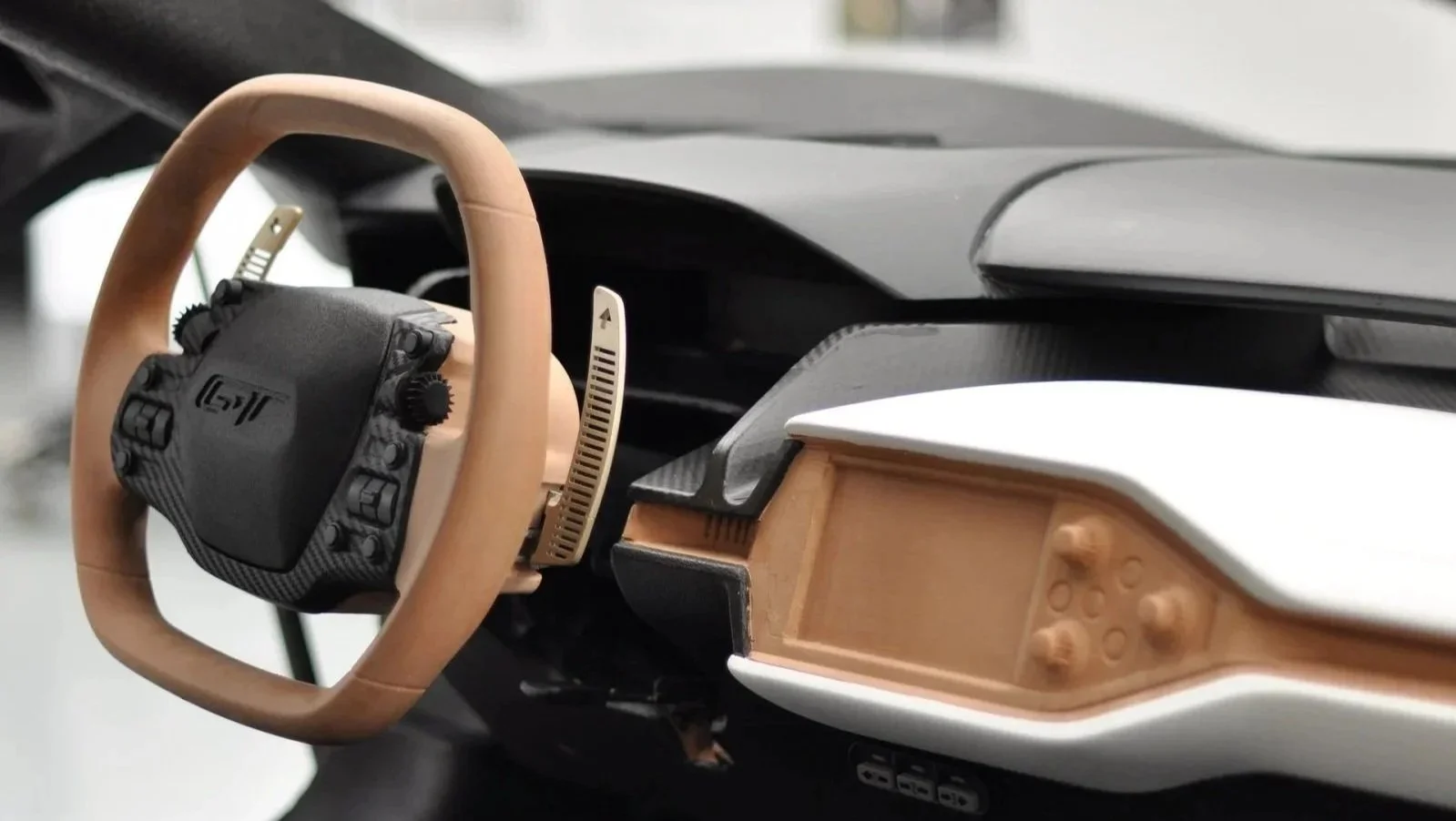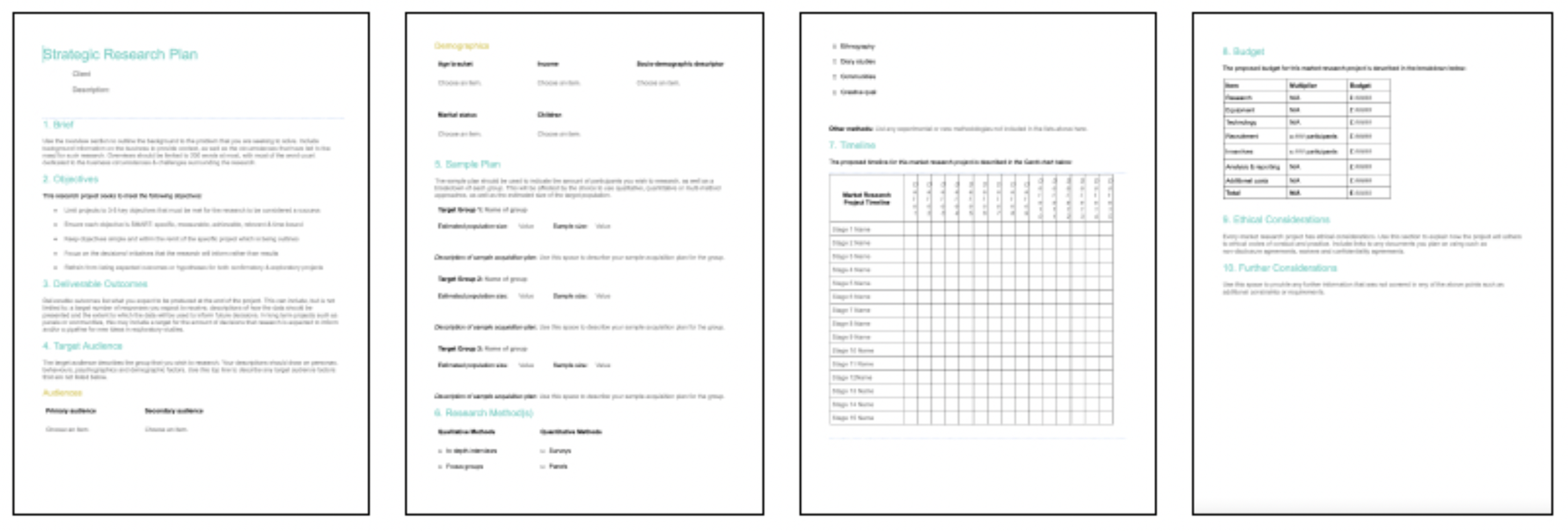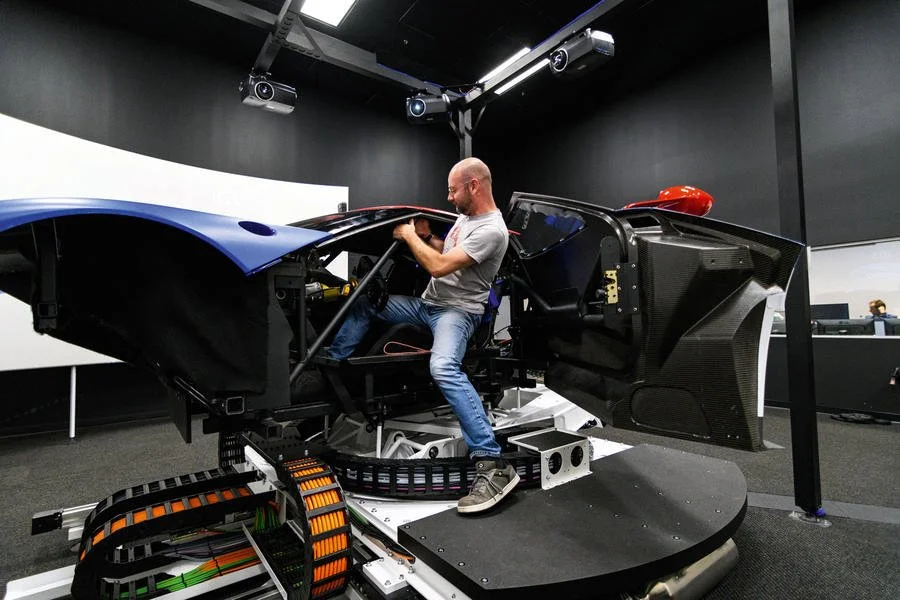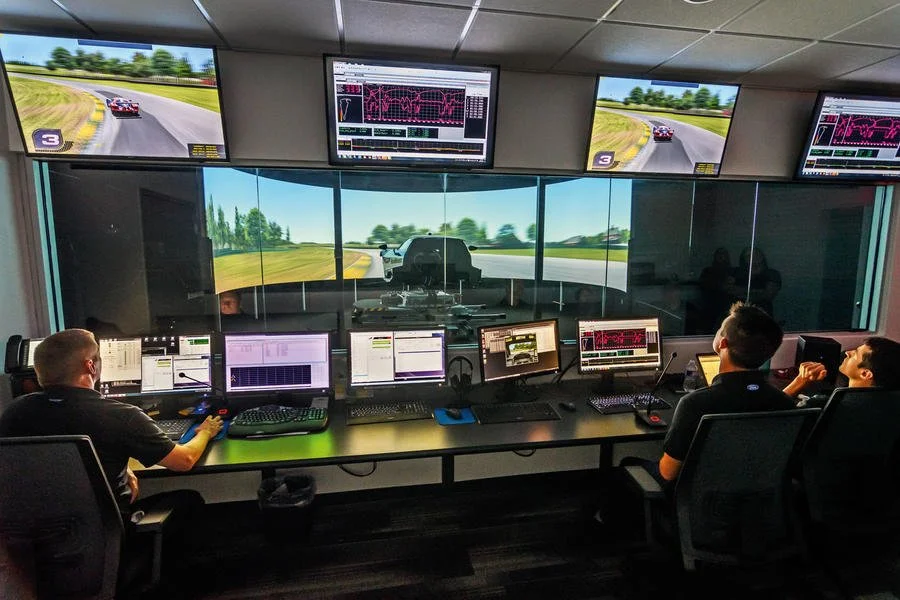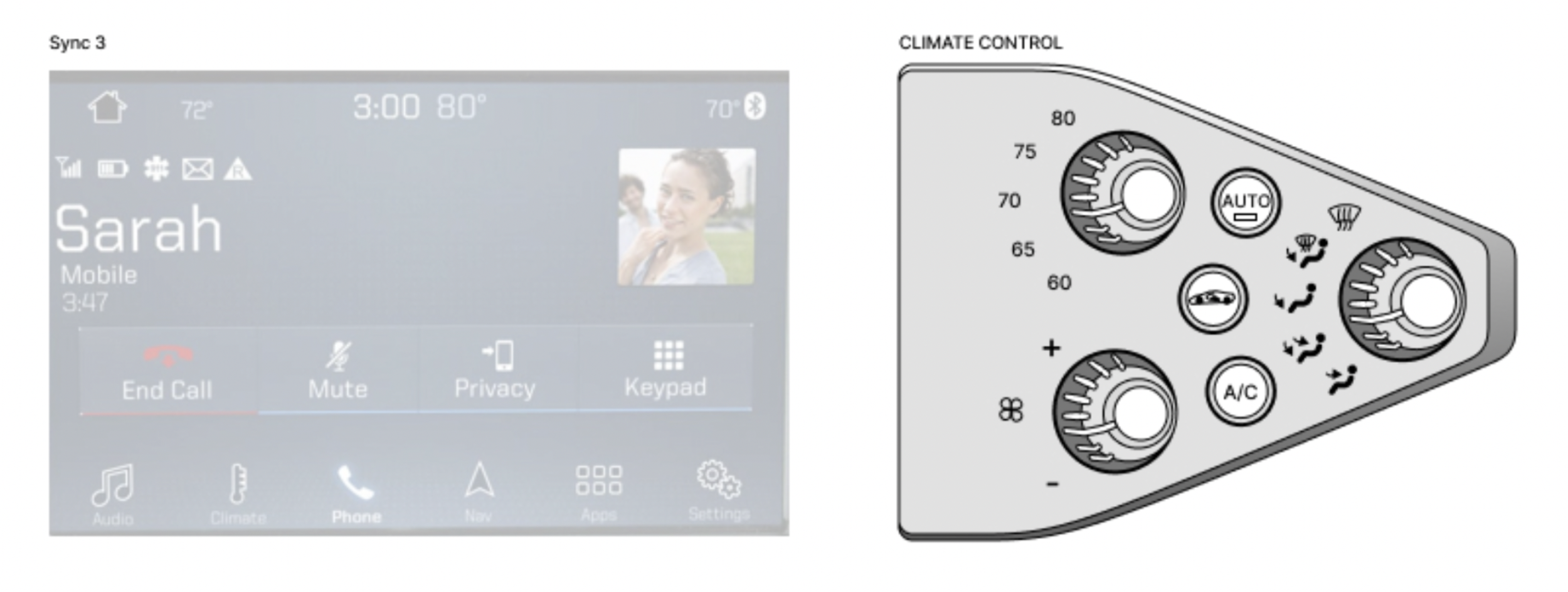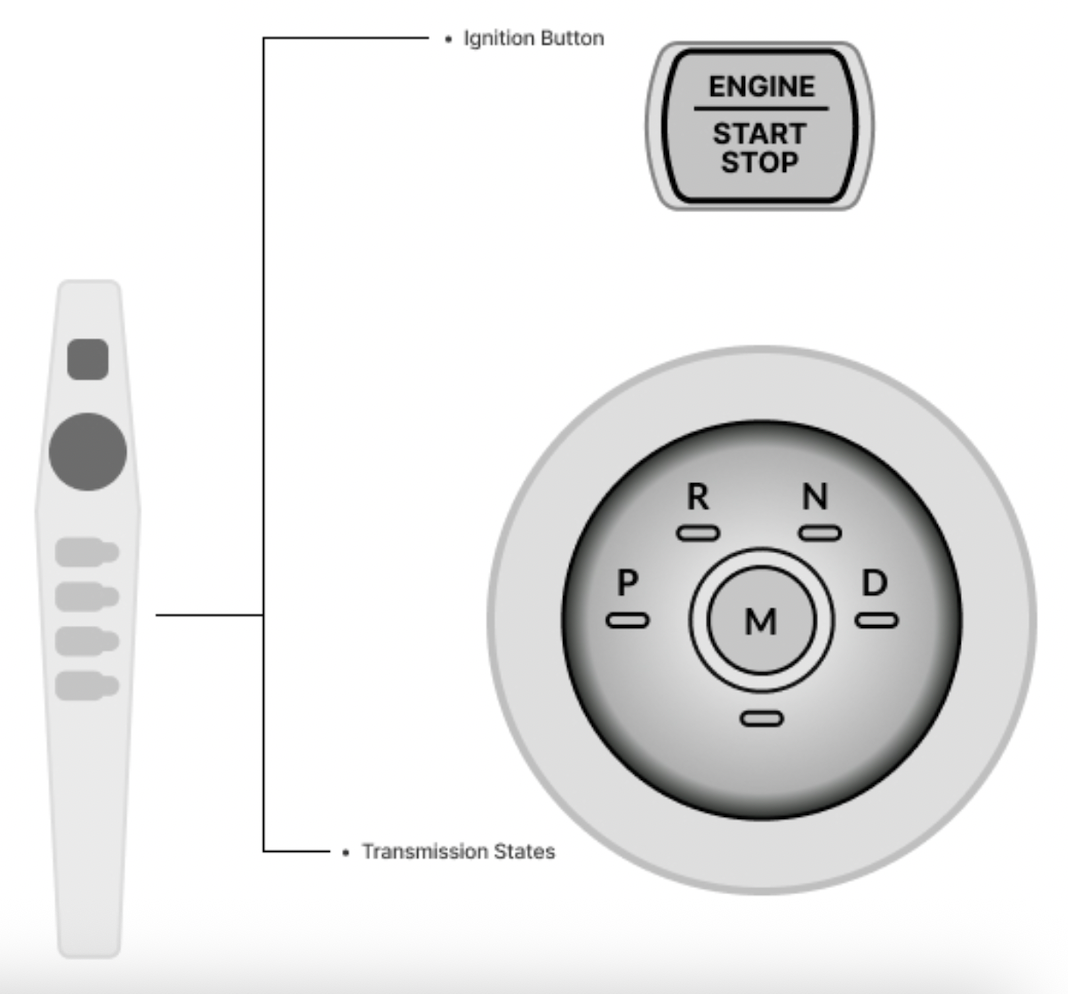2017 Ford GT HMI
Lead Automotive HMI Designer
ID | IxD
The Ford Mission
Beat Ferrari at 2016 Le Mans
The 2016 marked the 50th Anniversary of Ford's infamous win over the notorious Ferrari of the 1960s in Le Mans racing history.
Win Again & Showcase Production Model
The Challenge
Project Phoenix
The project was coined as Project Phoenix to resemble an age of rebirth. Yet drawing minimal influence
from its predecessors and focusing on the tech it showcased.
Build the Prototype in 9 Months
Studio Competition
The interior and exterior design studios kicked the project off with an internal competition; best design wins.
I was the only internal digital designer.
Product Valuation
Pilot Performance First
Interior HMI takes priority to driver's ability to manipulate their interactions with minimal dexterity while maintaining a focus on the driver's experience.
If it doesn't enhance driving it has to go.
Evolving Ford Driving DNA
Blur the lines between man and machine by extending the vehicles driving dynamics into the driver's conscience.
Automate Vehicle Modes to react to user; Instant Pilot.
Integrate Legacy Sync Systems
While the vehicle is completely custom compared to the rest of the lineup, legacy parts and software will be utilized for efficiency. However, will be tailored for the GT.
The Same Brain Inside a Ford F-150 Raptor.
Strategic Research Plan
The Perfect Blueprint for 9 Months
A Strategic Research Plan is meant to summarize and catalog the project goals from a holistic perspective. They are excellent in providing guidance to anyone new or referencing the project in a 'all in one place. The following list shows all the main categories and subcategories.
Interviews
Contextual Inquiry
Stakeholder
Customer
Employee
Research
Key Points of Interest
User Performance
Standards & Practices
Problem Valuation
Personas
Use Cases
Solution Valuation
Targeted Epics
Opportunity Exploration
Interviews
Phase One: Qualitative Interviews
Because not everyone can own a supercar.
Once we have established the problem valuation we can begin to render out persona profiles to cross analyze where and why the performance driving occurs. Follow-up interviews may take place in order to create a 'success curve."
Phase Two: Simulated Reviews
After in person interviews we were able to focus on a select number of users for simulated research in Ford Racing's comprehensive simulator where we are able to look at nearly every reactive within a controlled environment.
Immersive Task Driven Research
Much like the one-on-one's each user was orchestrated to perform a baseline test before given certain challenges that prompt a response.
Wrote scripts for entire simulation exercise.
• GSR Sensor • Retina Tracking • Skin Temp • Dexterity • Response Time
Virtual Observation
Though not conducting the research I was able to sit comfortably at my desk tracking the user remotely. This allowed us to gather relevant and irrelevant for the HMI team.
Aggregated and Synthesized key performance observations needed.
• Whiteboard (Digital) • Recording • Reusable Data
Solution Valuation
What We Discovered
From the one-on-ones and observations I was able to gather a focus and design direction for the digital ecosystem within the GT.
Driving Modes
Driving modes to date behaved very linearly without enhancing driver performance. We focused on modes having very tailored behaviors coupled with distinctive characteristics to view only what the user needs.
Dynamic Information
Coupled with the differentiating modes design and development worked heavily on proposing adaptive road and track performances through immersive visual feedback. ie: the faster you go, the larger the speedometer gets while everything de-emphasizes.
Physical HMI
Integration: Styling and Engineering Departments
Steering Column
Racing Inspired
In order to perform under extreme scenarios the GT had to accommodate readily available vehicular functions within a finger length distance.
No Frills. All Skills
Much like the one-on-one's each user was orchestrated to perform a baseline test before given certain challenges that prompt a response.
Race Inspired Controls. Technicality
9 Iterations & 1 Winner
Many rounds of trial and error took place before we decided on an optimal steering wheel which encompasses the practicality of road driving and spirit of racing.
The 8th Designer won the competition based off my Redlines.
Climate Control
Celebrate Functional Aesthetics
At a glance textured toggles ands knobs declare their obvious function and dependability.
Tactile is King
For the secondary functions outside the immediate steering wheel, like climate control, are given the old school feel of tactile feedback. This gives the benefited function of blind interactions while maintaining eyes of the road.
Center Consol
Cockpit
With only 4 inches to spare at its widest, the center console offers minimal yet crucial vehicle start functions.
Check for Liftoff
Once the desired sequence for driving conditions and modes are selected the transmission selector prompts driver to engage transmission state before ignition.
Inspire by Startup Sequence.
Weight Reduction Matters
While this real estate is small; it does not go without reason.
Separating drive critical functions help reduce cluster in drive specific location with in the cockpit.
Inspire by Ignition Sequence.
Digital HMI
Immersive Experience
Legacy Foundations
Ford Sync 3
While the GT was under development so was the refresh Sync 3 which allowed a great level of flexibility to meet the custom needs to the narrow landscaped screens. This allowed owners to access the simple comforts of the infotainments system.
Same Infotainment Perks
The GT's 6.5" infotainment display maintains the same digital architecture as the standard 8" capacitive display.
Instrument Cluster
Landscape
The 10.3 inch display in the GT allowed ample room for the instrument cluster. Ironically it created a babysitting relationship due to all the opinions in the kitchen.
Content Only Where Needed
There's every opportunity to make something cool just because you can. In the GT's case we focused on what only mattered. This practice removed most of the information that clouded the economy class vehicles. The GT became not just a best practices study for super cars but also for all cars.
Final Prototype
2015 Vision Concept
Production Ready
Changes for the Real World
Use for normal driving in dry conditions.
Standards and Compliance: Glanceable Field of View
Minimum of 2-4 inches for major functions
Minimum 6 inches for secondary functions
Maximum of 10-12 inches for Tertiary features
Final Design
Normal Mode
Use for normal driving in dry conditions.
Visual Reduction for Casual Driving.
In normal mode the cluster reduces the amount of information to a weighted balance of speed and gear selection.
Tertiary data like temp and fuel reside in the top left.
Wet Mode
Used for driving in inclement weather conditions. In Wet Mode, launch control is not available and the system adjusts the throttle calibration.
Safety
Almost identical to Normal Mode, however the color pallet adjusts accordingly. There are no dynamic throttle animation
to avoid anxiety during inclement weather.
Sport Mode
In Sport Mode, the engine and throttle calibration are adjusted for more response and turbo anti-lag is active.
There's always more.
'Sport' mode much like 'Normal' shows both the speedometer and gear selection. In this case the
gear selection is prioritized for that more aggressive 'Canyon Run.
Track Mode
Optimized settings for track handling performance. Track drive mode should only be used in a track environment, not on the street, due to the low ride height. In Track mode, turbo anti-lag is active. You can only select this setting when your vehicle is in park (P) and you must confirm the selection.
Okay Speed Racer...
In Track mode the driver is able to approach the GT's full potential as a racing car. On the track speed in merely a reference point than a determination of performance. Knowing what gear you are in is more reliable.
V-Max (Velocity Max)
Optimized settings for achieving maximum velocity (top speed). V-Max mode can only be used in a controlled track environment, not on the street, due to the low ride height. In V-Max mode the engine and throttle calibration are adjusted for more response. The User can only select this setting when your vehicle is in park (P) and you must confirm the selection.
One Job, One Metric
Ford gives the user the ability to optimize the vehicle's straight line speed. Doing so requires V-Max to focus only on speed and everything else as tertiary data.
Legacy Adaptation
Ford Performance Modes
My contributions to the vision concept and production HMI for the GT have now been adopted as permanent features in all of Ford’s Performance divisions.
2024 Ford Mustang Cluster



